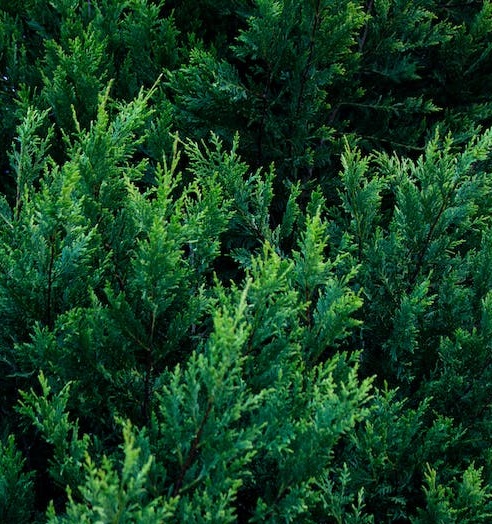Wood is a naturally sustainable material, by virtue of the fact that it can be renewed. With proper, conscientious forestry and harvesting practices, nearly any wood could be considered sustainable.
At the same time, some woods are more sustainable than others. For this, we need to consider the amount of space required, how large the tree grows, how quickly, and how much water the tree will consume before harvest, along with nutritional requirements.
The five on this list can be considered highly sustainable, for a variety of reasons that will be covered in this article, and the use of veneer only stretches their sustainability further.
Here’s what you should know.
American Cherry Veneer
American cherry is a domestic hardwood that is relatively fast growing and which has a lower carbon sequestration potential than other comparable hardwoods. This makes it more suitable for harvest because it is easier to replace, and is not as effective at filtering out carbon than other species.
On top of that, American cherry veneer is also very hard, durable, and long-lasting, and when properly cared for, could last for a lifetime or more.
Note: Brazilian cherry veneer is not the same species as American cherry, but the use of veneer is still more economical than solid hardwood.
American Beech Veneer

American beech is a close cousin of oak, and gives many of the same virtues as white and red oak. Not only does it look very similar, but beech veneer is hard, strong, and extremely tough. This makes beech veneer a particularly desirable and sustainable wood.
While beech is comparable in strength to oak, it has a lower carbon footprint, and, since it is a locally, domestically produced hardwood, doesn’t place as much of a strain on the supply chain as exotic species.
Hard Maple Veneer

Not only is hard maple found in abundance throughout the United States, but it is also a relatively fast growing hardwood, with a relatively low carbon sequestration rate.
This makes it more suitable for harvest than slower-growing trees that are better at sequestering carbon. It also shares the same virtues as beech wood veneer, being grown domestically.
Maple veneer is also prized for its color and figure (especially curly maple veneer and maple burl veneer), as well as for its hardness, strength, and general durability.
Red Cedar Veneer

Red cedar veneer has a few good things going for it. One is that it is relatively fast growing, despite its longevity. Although these trees can live for more than 200 years, they can still grow up to two feet per year.
On top of that, it is grown domestically and has a very large range. Moreover, it is a very light wood, especially compared to the three other hardwoods already covered. This makes it more economical to harvest, process, and transport.
Red cedar veneer is also prized for its unique attributes. Though it is soft, lightweight, and not nearly as strong as the other veneers mentioned here, it is extremely microbial, rot, fungal, and insect-resistant, making it exceptionally long-lasting.
Bamboo Veneer

Bamboo veneer is, all things considered, the most sustainable wood veneer on this list, and by a wide margin.
Bamboo plants are extremely fast growing (up to a foot per day) and can be harvested after as little as three years. They can also self-propagate and require little fertilizer or water, minimizing the cumulative environmental impact of intensively foresting bamboo.
On top of that, bamboo is widely grown in the United States and the wood, though less durable than some of the others mentioned here, is still fairly resilient. It is also very lightweight in nature, minimizing logistical costs.
What Makes These Such Sustainable Wood Veneers?
Each of these species can be considered to produce sustainable wood in its own right, but the production of veneer is an even more conscientious practice.
This is due to the fact that veneer consists of very thin slices of wood applied to a backer. One single log can produce volumes more wood veneer sheets than solid wood furniture or panels, making wood veneer a truly sustainable alternative to solid wood by comparison.
Paired with the fact that each of these species is comparatively sustainable, wood veneer from each of them is an even better option.
Plant It Forward with Oakwood Veneer

The species mentioned here produce sustainable wood veneers, and using veneer is an even more environmentally friendly option.
Even so, we are doing our part to help restore America’s forests. We’ve partnered with the National Forest Foundation to establish our Plant It Forward program, through which we plant a tree for every order placed with us.
See the previous link for more details on how the program works. Who knows - maybe your purchase will support the establishment of a tree of one of the species listed here!


